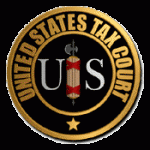 In Barkett v. Commissioner, 143 T.C. No. 6 (2014), the Tax Court held that gains reported from the sales of investments (not the amount realized) are used to determine whether the taxpayers understated gross income by more than 25% for purposes of the extended six-year statute of limitations under IRC § 6501(e)(1)(A). The issue came before the Tax Court on the taxpayers’ motion for partial summary judgment.
In Barkett v. Commissioner, 143 T.C. No. 6 (2014), the Tax Court held that gains reported from the sales of investments (not the amount realized) are used to determine whether the taxpayers understated gross income by more than 25% for purposes of the extended six-year statute of limitations under IRC § 6501(e)(1)(A). The issue came before the Tax Court on the taxpayers’ motion for partial summary judgment.
In Barkett, the taxpayers realized more than $7 million from the sale of investments in 2006, and reported $123,00 in gain. In 2007, the taxpayers realized more than $4 million from the sale of investments and reported $314,000 in gain. The gross income reported in 2006 and 2007 was $271,440 and $340,591, respectively. The IRS issued a Notice of Deficiency more than three years but less than six years after taxpayers filed their 2006 and 2007 returns.
The IRS asserted that taxpayers omitted $629,850 and $432,957 in gross income for tax years 2006 and 2007, respectively. The taxpayers stipulated to the amounts that were omitted but challenged the validity of the Notice of Deficiency on the grounds that the three year statute of limitations expired under IRC § 6501(a) and the amount omitted from gross income did not exceed the 25% threshold to extend the statute of limitations to six years under IRC § 6501(e).
The taxpayers’ relied upon the Supreme Court’s decision in United States v. Home Concrete & Supply, LLC, 566 U.S. ___, ___, 132 S. Ct. 1836 (2012), which invalidated a portion of Treas. Reg. § 301.6501(e)-1 and held that the six-year statute of limitations under IRC § 6501(e) does not apply to a taxpayer’s overstatement of basis. The taxpayers argued that amounts realized should be included in the denominator of the 25% omitted calculation for purposes of IRC § 6501(e)(1)(A).
The Tax Court rejected the taxpayers’ interpretation of Home Concrete and held that gross income stated in the return only includes gains reported from investment property – the excess of the amount realized over the basis in the assets sold. The Court cited Insulglass v. Commissioner, 84 T.C. 203 (1985) and Schneider v. Commissioner, T.C. Memo. 1985-139, stating that “capital gains, not the gross proceeds, are to be treated as the amount of gross income stated in the return for purposes of section 6501(e).” The Court distinguished this case from the Intermountain line of cases that led to the Supreme Court’s decision in Home Concrete because those cases addressed when gross income is omitted from the return, not how to calculate gross income (the issue in this case).
Read the full Tax Court opinion here: Barkett v. Commissioner, 143 T.C. No. 6 (2014).

